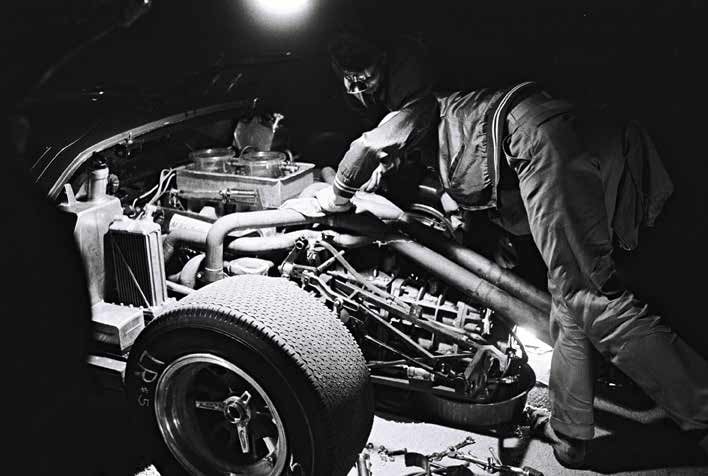
Source: Motorbooks
The Ford GT is among the most legendary cars to emerge from
an American stable in the history of, well, cars. Born on the circuit (and not
just any, but the equally legendary Le Mans Circuit de la
Sarthe), the GT transcended popular volume-sellers like the Corvette, Mustang,
Charger, and other local muscle of the day.
“Since 1969, if it’s sleek, mid-engined, and American, it
better be as good as the Ford GT40. It looked so good that when Ford unveiled
the [later iteration of the] GT, it looked almost identical to its 40-year-old
predecessor,” said Derek Sapienza in our profile of the beast.
“Its dominance on the track was so impressive that it’s one of the few
Americans mentioned among the all-time performance greats, and it’s
stranger-than-fiction story is so impressive, that in the annals of automotive
history, it could be the greatest automotive tale to ever come from our
shores,” he continued.
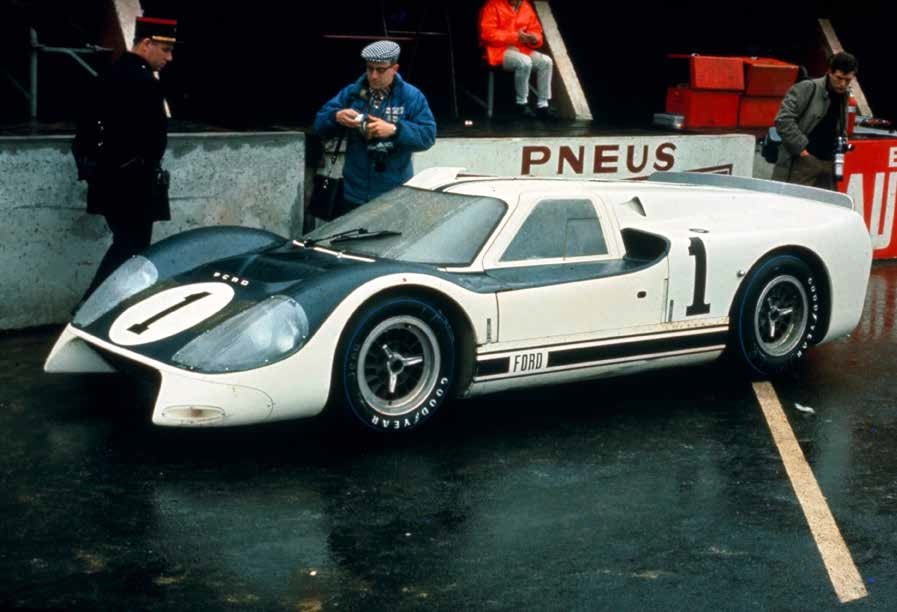
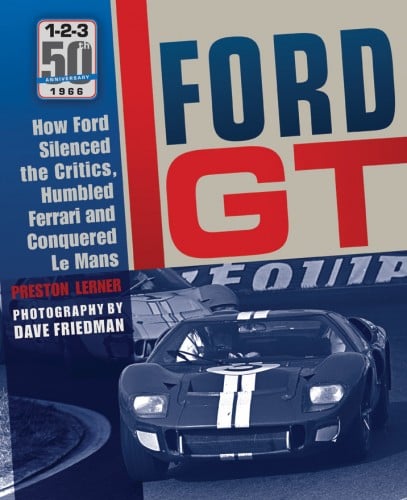
Source: Motorbooks
There’s no better time to revisit the history of such an
incredible car than now, as Ford plans its return to Le Mans in 2016. Thanks
to Motorbooks, doing so hasn’t been possible in such a thorough and
well-illustrated manner:Ford GT: How Ford Silenced Critics, Humbled Ferrari,
and Conquered Le Mans is a comprehensive review of how this icon of
American engineering was initially created. If you know of a gearhead with
a penchant for American cars, it’s a must-have companion to that engine block
coffee table in his or her living room.
Author Preston Lerner compiles the ridiculously detailed
history of the greatest American race car ever, but here’s the rundown. Again,
Derek Sapienza:
The GT40’s story begins in 1963. This was a pre-Mustang
Ford, when its hottest car was the giant “R-Code” Galaxie 500, a 450
horsepower monster tuned to meet NASCAR and NHRA standards. But the
company was already aiming higher — it was in the final stages of
buying Ferrari from its mercurial namesake, a move that would have
turned the Blue Oval into an international powerhouse overnight. Enzo Ferrari had
long resented his company’s production cars and saw them as little more than a
necessity to raise funds for his racing team. Ferrari was eager to sell, but
with one stipulation: that he retain control of racing operations. But he had
met his match in the equally difficult Henry “Hank the Deuce” Ford II, who
wanted all of Ferrari, and said he would refuse to compete Ferraris against
Fords in races like the Indianapolis 500. Outraged, Ferrari broke off the
talks, leaving Ford with nothing but millions of dollars in lawyer and
auditing fees. The Deuce retaliated by issuing a directive to his
performance department: develop a car to destroy Ferrari on the track, and do
it now.
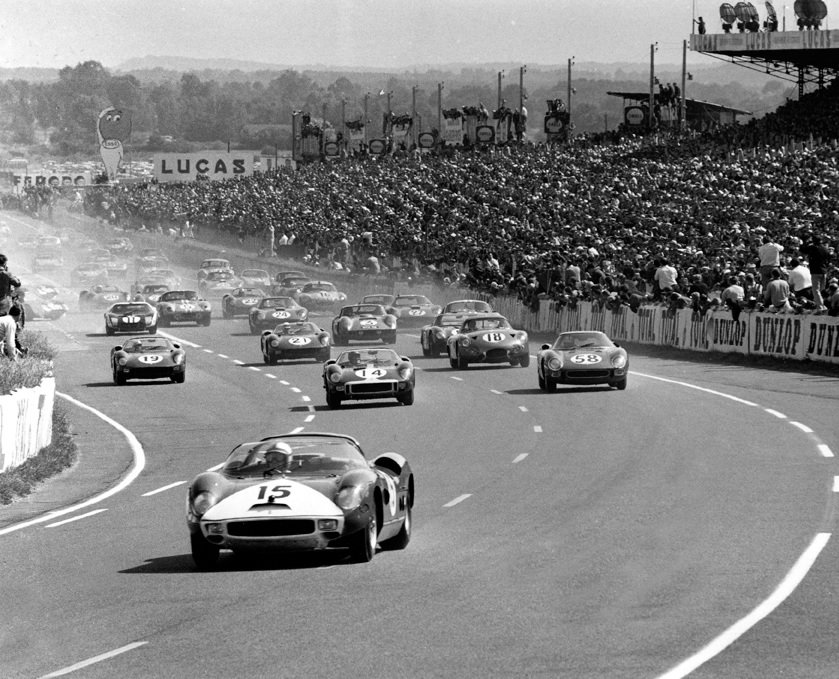
Source: Motorbooks
America had a vibrant racing culture at the time, but
internationally, the scene was dominated by the Italians, Germans, and British.
The GT not only put Ford on the map, but put America on the radar as a force to
be reckoned with on the international race scene.
Lerner, who is a regular contributor for Automobile
Magazine, spins a compelling narrative that not only provides the history of
the car, but offers a window into the divisive politics that dominated
manufacturer-backed racing in the 1960s. Had Enzo Ferrari not been the “vain,
domineering, and egotistical” man that he was, and had Henry Ford II
not taken Ferrari’s rejection as a personal insult, we’d probably be without
one of the greatest legends of American racing today.
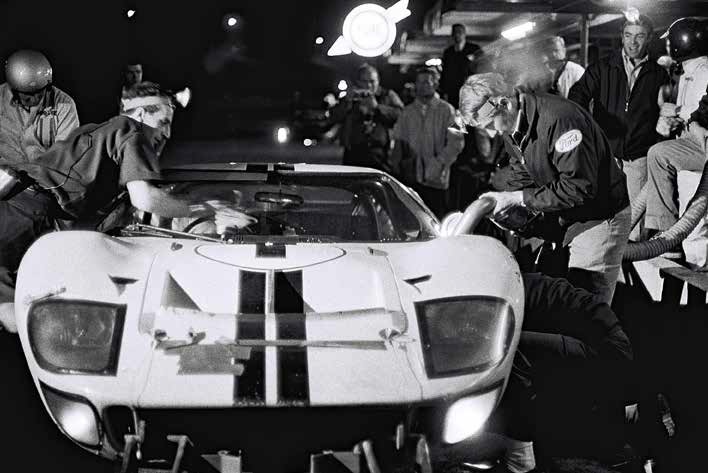
Source: Motorbooks
The GT lives on — it was revitalized in 2005, and the
brand-new model was dropped at the 2015 North American International Auto Show
earlier this year. The latter dropped the traditional V8 for a
twin-turbocharged V6 engine, but in true Ferrari-beating form, it’s expected to
make in excess of 600 horsepower in legal street-spec.
Though its looks unmistakably like the GT40 and GT road cars of
the past, the new model doesn’t capture the grit, sweat, and fervor that went
into developing the original GT. There were no obvious politics aside from
wanting to resurrect a legend, no spat with Ferrari that drove the company to
develop it. It was designed with 3D modeling, in clean workshops with
cutting-edge equipment and industrial wind tunnels. The original was done
out of the parts bin, in pit lanes through trial and error. You don’t see that
kind of engineering anymore these days.
source: http://www.cheatsheet.com/automobiles/ford-vs-ferrari-how-ford-won-in-the-greatest-race-in-the-world.html/?a=viewall
by Justin Lloyd-Miller
http://www.fzrestoration.com
No comments:
Post a Comment